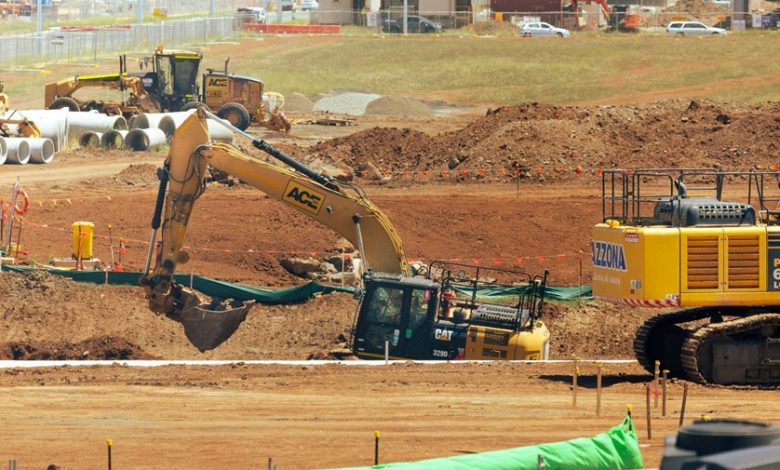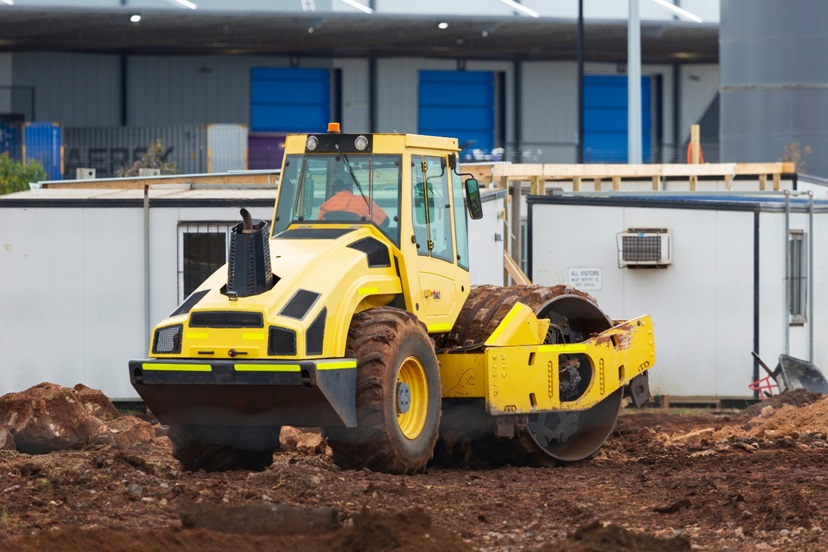The Importance of Grading in Excavation Projects

A well-graded site is the unsung hero of a durable construction project. It is critical to reconciling whether or not a building is durable, safe, and has curb appeal. Before a concrete pour, or sod is laid out, the earth needs to be manipulated into a form that allows water to flow, the establishment of load-bearing surfaces, and a solid foundation formed. Homeowners and students of built environments gain a sense of how excavation directly translates into safety, cost, and aesthetic concerns through the mechanism of evaluating a property’s existing grading.
What Grading Means
Grading (see here for more details) is the act of manipulating, or shaping, ground surface so that it meets construction design elevations, and directing surface water patterns. Although grading relates to leveling, the meaning is not synonymous – grading is making spaces purposeful low and high so that rainfall knows how to escape, leveling is making areas even. Proper grade elevations occur from a benchmark, through the use of grading instruments like laser levels, and rotary transits, then transferring the grades to the site.
For residential projects, an excavation contractor utilizes the cutting (digging up soil) and filling (adding earth and compacting) to hit those elevations. Proper grading also protects topsoil for later landscaping, prevents ponding next to driveways, and adds transects between patios and walks. If grading can be formulated or planned into the demolition services of remodels and additions, excavation crews are able to stage a sequence of events – earthwork, clean-up of debris, back-filling – in an order that eliminates redundancy or delays to the schedule of a project.
Slopes and Water Drainage
Drainage is the number one reason grading matters. An existing building cannot withstand the water from roof runoff and storm water accumulating in the ground, near the foundation. Design criteria typically emphasize to create a “positive slope” away from vertical walls of a building, over the first several feet of yard, or landscape bed.
Homeowners in a local area who are studying grading and leveling King of Prussia will assess normal slope standards and area conditions to determine what improvement options are feasible on their lot.
- Swales (shallow, vegetated channels) take yard and garden runoff and also discharge it to a safe location.
- Grading for driveways and patios should slope toward the ground to ensure surface drainage and mitigate pools at thresholds.
- Downspout extensions and tightlines move rooftop runoff to daylight or a dry well to control erosion of the mulch, in a garden bed for example.
- In clay like soils, French drains may supplement surface grading where water infiltration is slow.
Soil Compaction Explained
Compaction is the process of squeezing air from soil so that every piece will lock together and can support weight. Fill that is placed in thin lifts (or layers) and compacted using rammers or plate compactors if almost always going to settle less than the dumped-out portion of fill. Well compacted subgrade layers will support pavements added onto it and reduce rutting under freeze-thaw cycling. For more information, follow this link at https://www.sciencedirect.com/topics/agricultural-and-biological-sciences/soil-compaction.
Moisture control is key; if the soil is too dry it will not knit together, if it’s too wet it will pump under the equipment (one of the reasons they lose strength). Many crews target an acceptable moisture level sweet spot to achieve, where a handful can be molded into a ball and hold its shape with minimal dripping. On sites that are large enough a lab verified density may be specified. Test pits will confirm layers were placed correct to designed specification and/or engineered. When compaction, rough grading, and demolition work are designed concurrently, crews can avoid driving heavy machines over completed grades and reduce schedule slippage.
Preventing Foundation Problems

Random grading is one of the leading problems when there is a lot of water in basements or slabs that are heaving, and sidewalks that are prone to frost. Water at the bottom of a footing can create hydrostatic pressure and remove fine material from the backfill, leaving voids. Proper grading will protect the structure even before waterproofing and drains are installed and tested.
- Make sure you have a positive slope away from foundation walls, generally 5% (6 inches over 10 feet) unless there are limit lines or easements.
- Use clean, compactable backfill around the house, not organic topsoil. Organic material decays and settles, which means it sets up pathways for water to access the foundation.
- Make sure surface grading is in concert with footing drains, gutters, and splash blocks, so that all systems, not just one, work together.
- Where a walkout or patio meets the house, the edge should have a tiny pitch, isolation joints and a drainage strategy to minimize settlement at the edge.
Common Grading Mistakes
There are several obvious blunders that minimize good earthwork. One is just assuming that the yard is supposed to be perfectly flat; a dead level lawn may look perfect on the plan, but in reality, standing rainwater may seem attractive and minimizes maintenance. Burying construction rubbish, brush or stumps in fill is another blunder. Decomposing material will create voids, and sink later, so it is reasonable to remove this material from site thru responsible removal of junk or construction debris.
It is risky work to work soil when it is fully saturated. Heavy equipment is notorious for smearing wet clay into layers that trap water which causes frost heave during the winter months. Using topsoil and mixing it into structural fill is problematic; topsoil should only be placed on the last two to six inches for planting, not in the load bearing lift. Skipping all erosion controls while performing and post grading creates a lot of silt leaving the property during much needed heaving, clogging, and potential for fines and rework. By collaborating and with a conscientious debris cleanup/earthwork team. They have often had options already in place like silt fence, inlet protection, and stabilization before site purgation.
If done properly, grading creates a well laid plan for all other trades. After all, with controlling slopes, proper compaction, and any further drainage aspects completed; houses will tend to stay drier, pavements last longer, and landscapes are more maintainable. To students, we talk about grading to exemplify many of the civil principles that lead into everyday construction; to the homeowner, it is that quiet investment that allows problems to stay away for years.

